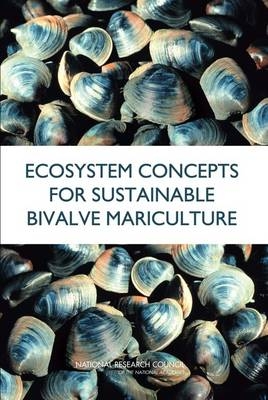
Ecosystem Concepts for Sustainable Bivalve Mariculture
Seiten
2010
National Academies Press (Verlag)
978-0-309-14695-1 (ISBN)
National Academies Press (Verlag)
978-0-309-14695-1 (ISBN)
U.S. mariculture production of bivalve molluscs-those cultivated in the marine environment-has roughly doubled over the last 25 years. Although mariculture operations may expand the production of seafood without additional exploitation of wild populations, they still depend upon and affect natural ecosystems and ecosystem services. Every additional animal has an incremental effect arising from food extraction and waste excretion. Increasing domestic seafood production in the United States in an environmentally and socially responsible way will likely require the use of policy tools, such as best management practices (BMPs) and performance standards. BMPs represent one approach to protecting against undesirable consequences of mariculture. An alternative approach to voluntary or mandatory BMPs is the establishment of performance standards for mariculture. Variability in environmental conditions makes it difficult to develop BMPs that are sufficiently flexible and adaptable to protect ecosystem integrity across a broad range of locations and conditions. An alternative that measures performance in sustaining key indicators of ecosystem state and function may be more effective.
Because BMPs address mariculture methods rather than monitoring actual ecosystem responses, they do not guarantee that detrimental ecosystem impacts will be controlled or that unacceptable impact will be avoided. Ecosystem Concepts for Sustainable Bivalve Mariculture finds that while performance standards can be applied for some broad ecosystem indicators, BMPs may be more appropriate for addressing parameters that change from site to site, such as the species being cultured, different culture methods, and various environmental conditions. This book takes an in-depth look at the environmental, social, and economic issues to present recommendations for sustainable bivalve mariculture.
Because BMPs address mariculture methods rather than monitoring actual ecosystem responses, they do not guarantee that detrimental ecosystem impacts will be controlled or that unacceptable impact will be avoided. Ecosystem Concepts for Sustainable Bivalve Mariculture finds that while performance standards can be applied for some broad ecosystem indicators, BMPs may be more appropriate for addressing parameters that change from site to site, such as the species being cultured, different culture methods, and various environmental conditions. This book takes an in-depth look at the environmental, social, and economic issues to present recommendations for sustainable bivalve mariculture.
1 Front Matter; 2 Summary; 3 1 Introduction; 4 2 Best Management Practices and Performance Standards; 5 3 Ecological Effects of Bivalve Mariculture; 6 4 Bivalve Mariculture Contrasted with Wild Fisheries; 7 5 Carrying Capacity and Bivalve Mariculture; 8 6 Economic and Policy Factors Affecting Bivalve Mariculture; 9 7 Ecosystem Services of Bivalves: Implications for Restoration; 10 References; 11 Appendixes; 12 Appendix A: Statement of Task; 13 Appendix B: Committee and Staff Biographies
| Erscheint lt. Verlag | 18.4.2010 |
|---|---|
| Verlagsort | Washington |
| Sprache | englisch |
| Maße | 152 x 229 mm |
| Themenwelt | Naturwissenschaften ► Biologie ► Limnologie / Meeresbiologie |
| Weitere Fachgebiete ► Land- / Forstwirtschaft / Fischerei | |
| ISBN-10 | 0-309-14695-X / 030914695X |
| ISBN-13 | 978-0-309-14695-1 / 9780309146951 |
| Zustand | Neuware |
| Haben Sie eine Frage zum Produkt? |
Mehr entdecken
aus dem Bereich
aus dem Bereich
Naturerfahrungen zwischen Quelle, See und Wildfluss
Buch | Hardcover (2024)
Verlag Anton Pustet Salzburg
30,00 €
Buch | Hardcover (2022)
National Geographic Deutschland (Verlag)
39,99 €


